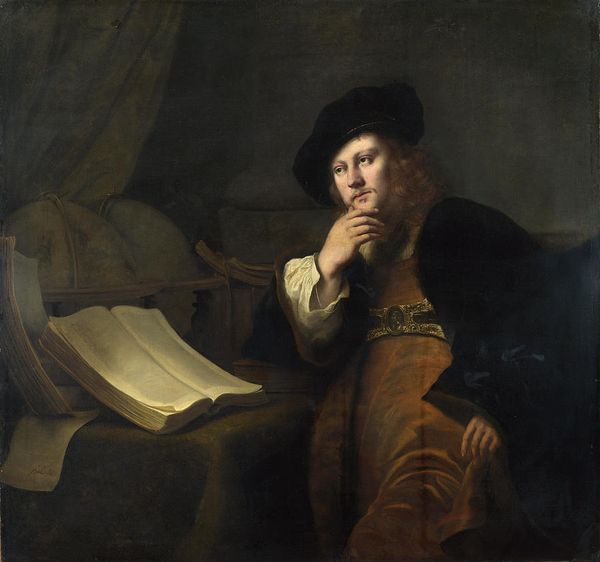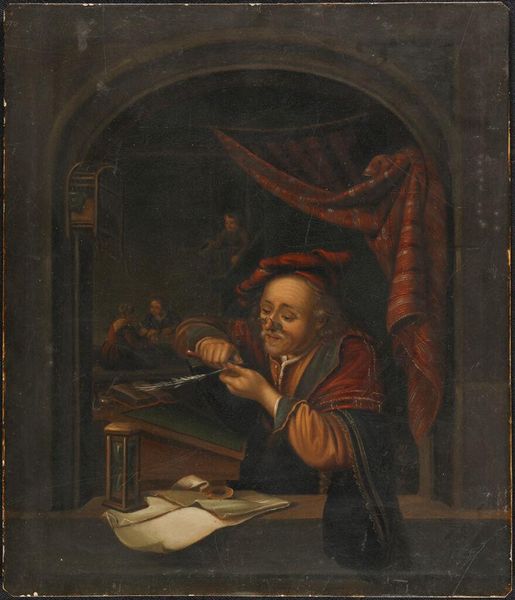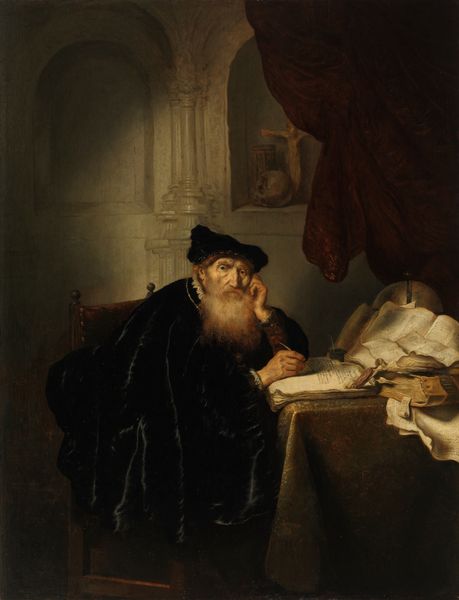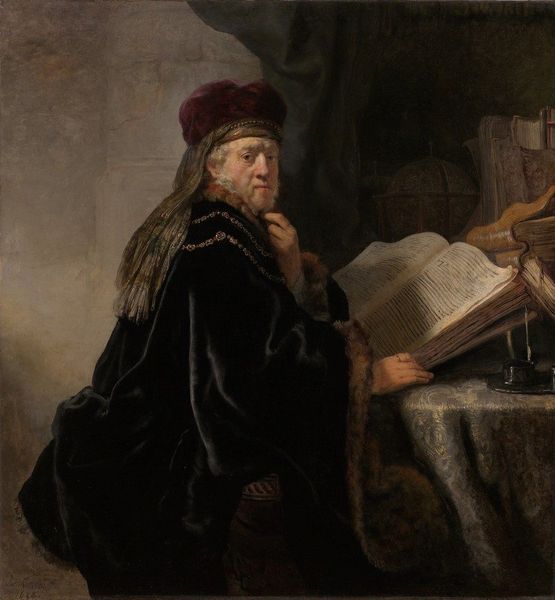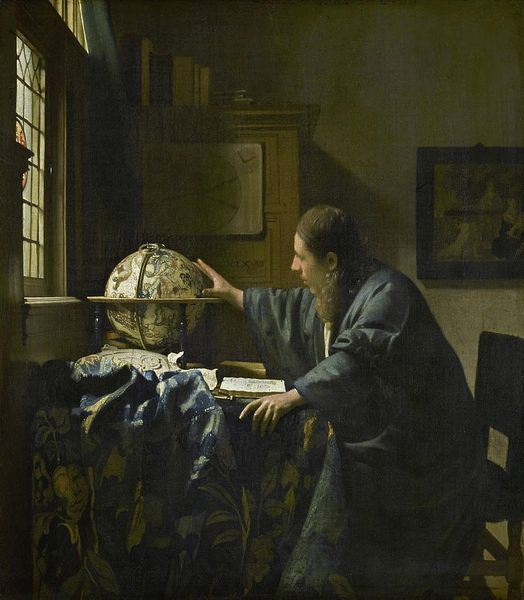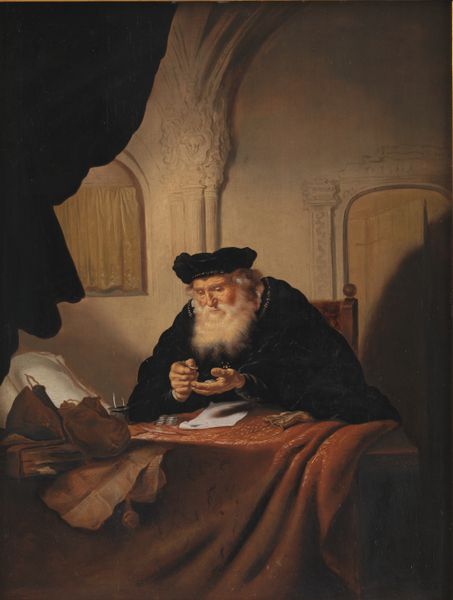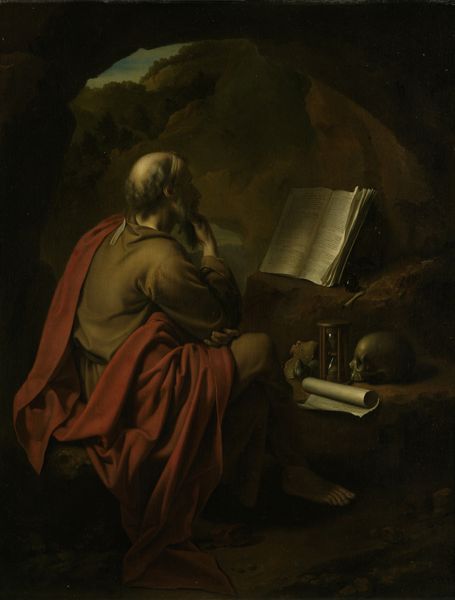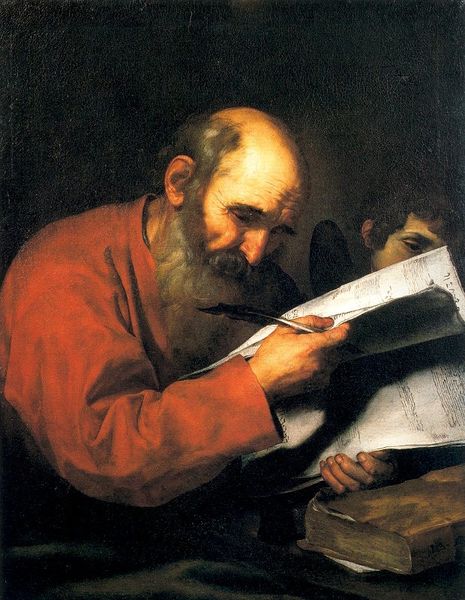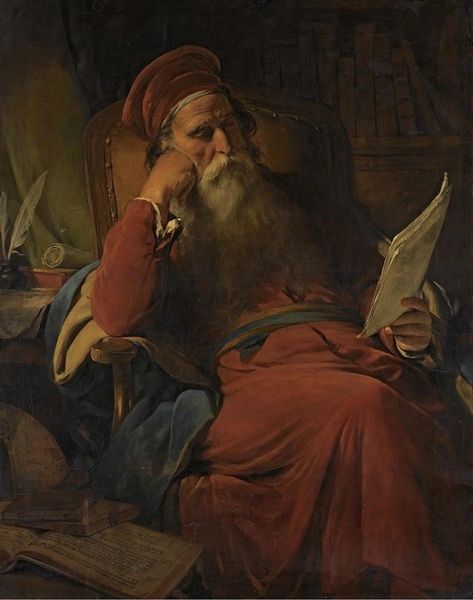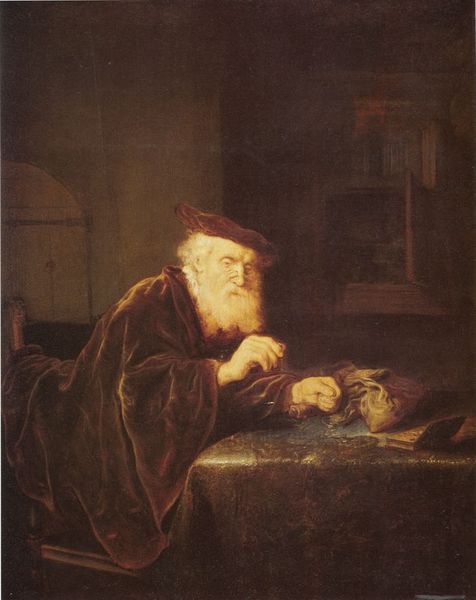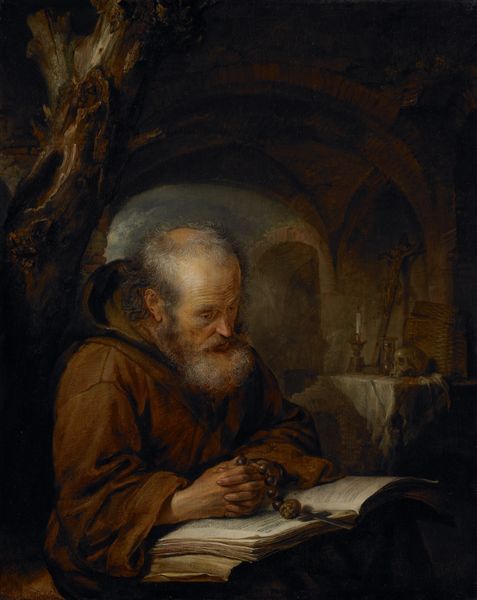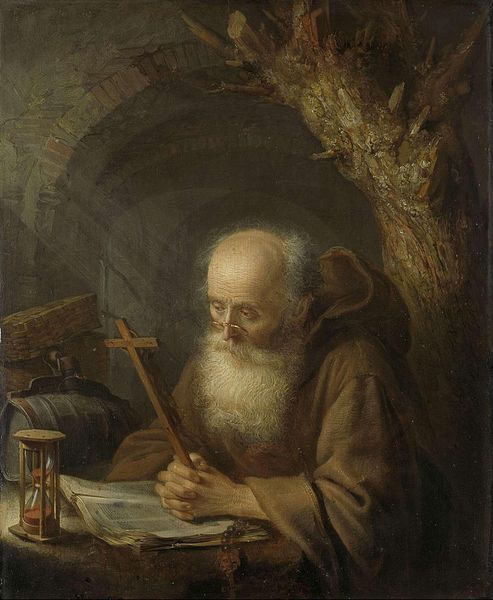
painting, oil-paint
#
portrait
#
baroque
#
dutch-golden-age
#
painting
#
oil-paint
#
portrait reference
#
genre-painting
#
history-painting
#
academic-art
Dimensions: 102 x 144.5 cm
Copyright: Public domain
Curator: Salomon Koninck painted "An Old Scholar" around 1645. The materials, of course, are oil on canvas. My initial sense is one of deep concentration. The palette is quite restrained. Editor: It’s more than concentration, isn't it? The figure seems steeped in history and wisdom. The cap, the beard...these are powerful symbols. There's a weight to this image. What exactly was Koninck trying to portray here? Curator: Let's consider Koninck's influences; we have Rembrandt's workshop dynamic. There is a direct focus on capturing textures – the rough pages of the tome, the rich, if subdued, colors of his clothing, the wrinkled skin on his hands. I want to examine those material conditions. How would that parchment feel? Editor: For me, that parchment represents the written word, accumulated knowledge passed down. He holds a quill; he literally holds the power to contribute to that narrative. That globe next to him? It reinforces a sense of encompassing, universal knowledge. The man is an icon of learning. Curator: That may be true. But Koninck was a part of the second generation of Rembrandt's workshop. How were his methods of painting influenced? What sources of pigment did he use? Where was his studio, and how would he get his materials to begin with? Was it the same shop and street Rembrandt had previously used? I imagine there was shared suppliers, with the older artist’s demand increasing market value for others... Editor: Yes, but regardless of the studio practices or market pressures, this image taps into something timeless. Think about the symbolism: The act of writing, of recording, bestowing knowledge. Look at other examples of “the scholar” through the history of painting... Aren't there many overlaps, visual cues handed from artist to artist? Curator: Ultimately, it all circles back to material means and conditions – these traditional materials are repurposed towards representing cultural knowledge in visual form, whether you are studying a portrait or even considering “genres.” Editor: And those genres resonate, Curator. The man looks away as though divinely inspired! Curator: Perhaps what this has taught us is how historical narratives continue to be crafted, re-crafted, repurposed, so much so that the materiality itself adds more to the experience... Editor: I agree, seeing through both of our lenses enriches the understanding. I now can see the "means of making" and acknowledge that labor too adds to the historical symbolism.
Comments
No comments
Be the first to comment and join the conversation on the ultimate creative platform.
